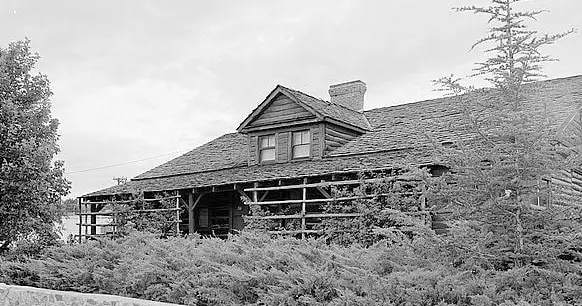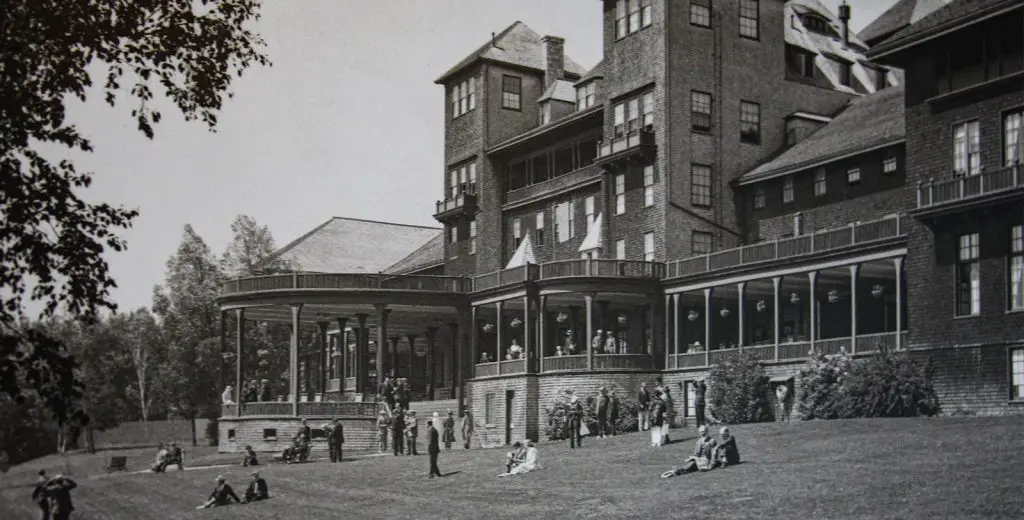In the heart of Arizona lies Prescott, a town that epitomizes the essence of architectural metamorphosis. This locale is a living museum, where each building narrates a distinct chapter of an ongoing saga.
Prescott’s architectural evolution timeline is a captivating story, etched in the walls and facades of its structures, spanning from the rugged early settlements to the sleek lines of contemporary design.

The journey through Prescott’s architectural history is not just about the evolution of building styles; it’s a reflection of the town’s adaptive spirit, showcasing the interplay between form, function, and time.
The Foundations of Prescott’s Architecture
In the early settlement era, spanning from 1864 to the 1880s, Prescott’s architecture was marked by pragmatism and functionality. The pioneers, adapting to their new environment, constructed buildings from locally available materials, giving rise to a unique architectural style that was both simplistic and robust.
These early buildings were defined by their log or timber constructions, embodying the frontier spirit in their unadorned, practical designs. An example of this era is the iconic Governor’s Mansion, erected in 1864. This structure, forming part of the Sharlot Hall Museum today, is a tangible reminder of Prescott’s humble architectural beginnings.
As Prescott entered the late 19th century, the Victorian influence began to permeate its architectural landscape. This period saw a transition to more ornate and decorative designs, characterized by vibrant colors, intricate woodwork, and asymmetrical forms.
The Victorian style, a stark contrast to the earlier minimalist approach, reflected Prescott’s growing affluence and cultural aspirations.
Among the most notable Victorian buildings is the Bashford House, a masterpiece of this era’s design ethos. Now part of the Sharlot Hall Museum, it stands as a testament to the ornate and elaborate architectural tastes of late 19th-century Prescott.
Transition and Transformation (1900-1940)
The turn of the 20th century marked a significant shift in Prescott’s architectural narrative. The American Craftsman style, emerging during this period, introduced a new aesthetic that emphasized handcrafted artistry, natural materials, and a closer connection to the environment.
Prescott’s adoption of the Craftsman style was evident in its residential and public buildings, which showcased the characteristic low-pitched roofs, exposed beams, and extensive use of wood. This style signified a move towards a more organic, less formal architectural approach, resonating with the national trend of embracing simplicity and craftsmanship.
The 1920s in Prescott brought another wave of change with the Art Deco movement. This style, known for its geometric patterns, bold lines, and lavish ornamentation, offered a futuristic vision that contrasted sharply with the Craftsman’s emphasis on tradition and nature.
Art Deco in Prescott was a sign of modernity and progress, mirroring the town’s evolving cultural and social landscape.
Iconic Art Deco buildings from this era added a new layer to Prescott’s architectural tapestry, each structure reflecting the optimism and dynamism of the Roaring Twenties. These buildings remain key landmarks in Prescott, symbolizing a period of unprecedented growth and transformation in the town’s history.
Mid-Century Developments (1940-1970)
The post-war years in Prescott were characterized by an architectural shift towards Modernism. This movement, with its emphasis on minimalism, functional design, and innovative use of new materials, marked a significant departure from the ornate styles of the past.
Prescott’s modernist buildings, often featuring clean lines, open floor plans, and a focus on horizontal and vertical elements, reflected the era’s emphasis on efficiency and simplicity. This period saw the town embracing a more streamlined, less decorative architectural approach, in line with the broader national trend towards modernization and urbanization.
Simultaneously, there was a resurgence of interest in historical architectural styles. This revival was driven by a growing awareness of the importance of preserving Prescott’s architectural heritage.
Efforts to restore and maintain historic buildings gained momentum, highlighting the town’s commitment to honoring its past while looking toward the future.
This period of revivalism was not just about restoring old buildings; it was about reinterpreting Prescott’s architectural legacy in a contemporary context. The blend of preservation and innovation during these years laid the foundation for a diverse and rich architectural landscape, one that respected tradition while embracing change.
Contemporary Era (1970-Present)
In recent decades, Prescott has witnessed the rise of contemporary architecture, a style that blends functionality with aesthetic appeal. Contemporary architecture in Prescott is characterized by its versatility, blending traditional elements with modern design principles to create spaces that are both beautiful and practical.
Major contemporary architectural projects in Prescott have been instrumental in defining the town’s current skyline. These projects, often featuring innovative use of materials, energy-efficient designs, and a harmonious blend of indoor and outdoor spaces, reflect the evolving needs and values of Prescott’s community.
The integration of old and new architectural styles has become a hallmark of Prescott’s contemporary era. Innovative design approaches have led to the successful fusion of historic and modern elements, creating a unique architectural language that speaks to both the town’s heritage and its future aspirations.

Case studies of these fusion projects reveal a deep respect for Prescott’s past, coupled with a forward-thinking approach to design. This blend of old and new is not just about aesthetics; it’s a reflection of Prescott’s ongoing dialogue between its rich history and dynamic present.
Future Directions
Looking ahead, the future of architectural trends in Prescott appears to be a continuation of the town’s legacy of adaptation and innovation. Predicting these trends involves understanding the evolving preferences and needs of its residents, as well as the broader environmental and technological developments shaping the world of architecture.
Sustainable architecture and green initiatives are likely to play a significant role in Prescott’s future architectural landscape. As awareness of environmental issues grows, the adoption of eco-friendly design principles and materials is expected to become increasingly prevalent.
This shift towards sustainability is not just a trend; it’s a necessary evolution, reflecting a global movement towards more responsible and conscious building practices.
Architectural Heritage and Community Identity
Architecture in Prescott is more than a collection of buildings; it’s a manifestation of the town’s cultural identity. The diverse range of architectural styles present in Prescott tells the story of a community that has continually adapted and evolved, reflecting the changing tastes, technologies, and ideologies of its residents.

The role of the community in preserving Prescott’s architectural heritage cannot be overstated. It is through the efforts of local residents, preservationists, and architects that the town’s historical buildings have been maintained and celebrated.
This communal effort has ensured that Prescott’s architectural history is not just preserved but also integrated into the fabric of everyday life.
FAQs
In this section, we will be delving into some of the most common inquiries and curiosities that surround our topic.
What are the most significant architectural styles represented in Prescott?
Prescott’s architectural landscape is marked by a variety of styles, including the early Frontier and Pioneer designs, Victorian, American Craftsman, Art Deco, Modernism, and contemporary architecture.
How has Prescott’s architecture been influenced by its history and culture?
Prescott’s architecture reflects its cultural and historical evolution, with each style representing different periods of economic growth, cultural shifts, and technological advancements.
Are there any notable architects who have contributed significantly to Prescott’s architectural landscape?
While Prescott has seen contributions from various architects over the years, its architectural landscape is more a reflection of broader national trends and local craftsmanship rather than the work of individual architects.
What are some of the challenges in preserving historic buildings in Prescott?
Challenges include funding for restoration, balancing modern functionality with historical integrity, and ensuring adherence to preservation standards.
How can visitors best experience Prescott’s architectural heritage?
Visitors can explore Prescott’s architectural heritage through guided tours, visits to landmarks like the Sharlot Hall Museum, and walking tours of historic districts.
Conclusion
Prescott’s architectural evolution timeline is a vivid illustration of the town’s journey through various stylistic periods, each reflecting the socio-economic and cultural shifts of its times.
From the humble beginnings of frontier structures to the sophisticated contemporary designs, Prescott’s architecture tells a story of resilience, innovation, and a deep respect for both tradition and progress. This exploration not only uncovers the aesthetic evolution of a town but also highlights the role architecture plays in shaping community identity and preserving cultural heritage.
In Prescott, every building, every street corner, and every architectural detail is a part of a living history, a testament to the town’s enduring spirit and its continuous journey through the annals of architectural time.



Leave a Comment
You must be logged in to post a comment.